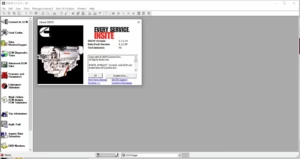Introduction
Diagnostic software is a vital tool in modern heavy-duty engine maintenance, and Cummins Insite has long been the benchmark for professionals in the field. Each new release builds upon the last, refining performance, expanding compatibility, and offering new tools for technicians. With the release of Cummins Insite 9.1 (version 9.1.0.74), many users are asking: how does it differ from previous versions like 8.5, 8.7, or even early 9.0 releases? This article explores the upgrades in 9.1.0.74 and why upgrading is essential for technicians and fleets.
The Evolution of Cummins Insite
Earlier versions of Insite—such as 8.5 and 8.7—were designed for reliability but lacked certain refinements required by modern engines. They were effective at fault code analysis and calibration but offered limited performance when handling newer ECMs and lacked some real-time optimization features.
When Insite 9.0 was introduced, it represented a leap forward in compatibility and user interface design. However, it was 9.1.0.74 that truly consolidated these improvements and brought meaningful enhancements for day-to-day operations.
Key Improvements in Cummins Insite 9.1.0.74
1. Expanded ECM Support
One of the most significant improvements in 9.1 is wider ECM compatibility. Newer Cummins engine platforms require advanced communication protocols, and earlier versions struggled to fully support them.
-
Broader coverage of modern engines.
-
Enhanced stability when connecting to updated ECMs.
-
Reduced connection failures, improving technician workflow.
For fleets with mixed generations of engines, this update ensures consistent diagnostic access across the board.
2. Improved User Interface and Navigation
While Insite has always been data-rich, previous versions could overwhelm less experienced technicians. Version 9.1.0.74 introduces:
-
Streamlined navigation menus for faster access to key tools.
-
More intuitive layout, reducing learning curves.
-
Optimized performance on Windows 10 and 11 systems.
This makes the software not only more powerful but also easier to use.

3. Enhanced Fault Code Analysis
Earlier versions of Insite provided fault code data but often required additional reference materials. In 9.1:
-
Fault codes include clearer descriptions and step-by-step troubleshooting guidance.
-
Integration of repair recommendations, minimizing guesswork.
-
Faster fault resolution, saving both time and operational costs.
This refinement turns diagnostic data into actionable insights without needing extensive manual cross-referencing.
4. Stronger Calibration Tools
Calibration has always been a cornerstone of Insite, but 9.1.0.74 brings added precision:
-
Latest ECM calibrations are now fully supported.
-
Improved fuel economy adjustments for efficiency.
-
Expanded regional compliance options, ensuring engines meet evolving emission standards globally.
Older versions offered calibration, but they lacked the flexibility and regulatory focus that today’s fleets demand.

5. Performance and Stability Enhancements
One of the less visible but highly impactful improvements is the core stability of the application:
-
Faster startup times.
-
More stable communication with INLINE adapters (especially INLINE 7).
-
Fewer crashes or freezes compared to older builds.
For technicians under pressure, these improvements mean greater reliability in the workshop or field.
Why Upgrade from Older Versions?
Some workshops hesitate to upgrade, believing that older Insite versions are “good enough.” However, the reality is that engines are evolving quickly, and diagnostic tools must evolve alongside them. Staying with outdated software can mean:
-
Inability to connect with newer ECMs.
-
Missed opportunities for efficiency through advanced calibration.
-
Higher downtime due to slower fault resolution.
Upgrading to 9.1.0.74 ensures technicians remain aligned with current technology, maximizing uptime and minimizing costly delays.
Conclusion
While older versions of Cummins Insite laid the groundwork for reliable diagnostics, Insite 9.1.0.74 takes the software to the next level. With expanded ECM support, a refined user interface, advanced fault code analysis, and improved calibration tools, it delivers unmatched capability and stability.
For technicians, upgrading to Cummins Insite 9.1 isn’t just about staying current—it’s about leveraging the best possible tools to deliver efficient, compliant, and future-ready engine maintenance.

